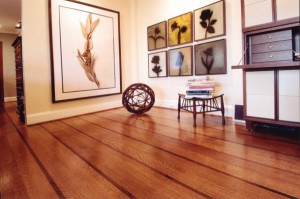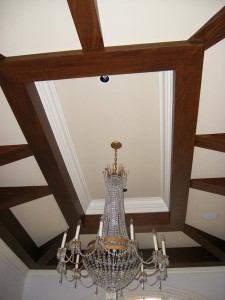
Strong, warm, elegant and sustainable wood has remained a timeless staple in home décor. The functionality and charm of wood finds its place both in and outdoors. In home décor, wood is used either as the building material for the house fixtures (wardrobes, kitchens, floors, ceilings, walls, staircases) or in furnishing items. Four main forms of wooden products are used in home fixtures namely:
- Panels– used on floors and walls
- Tiles– form stylish flooring and ceiling material
- Beams– add an exotic feel to a high ceiling and can also be used for defining space in an open floor plan
- Veneer– are thin sheets of wood that are used as a decorative layer on doors, wardrobes and kitchen surfaces
In addition to fixtures, using wood furnishing and accessories will add flair to a room. Wooden furniture, vases, bowls, candle sticks, lamp shades and window blinds when creatively positioned and displayed can be the ultimate statement of style and status
Finishing wood
Despite its strength, raw (unfinished) wood is prone to damage from elements of weather like moisture, temperature as well as damage by fungus and through abrasion. Wood finishes are used to provide protection and to enhance, alter or improve the appearance of wooden surfaces. Typically, a finish is a liquid, paste or gell that can be spread thinly on wood. There are two types of wood finish:
a) Surface / film finish: these form a film or coating on wood. They cure hard and can be built up in layers. Chemically, surface finishes consist of a resin (natural or synthetic film forming component), a solvent/ thinner (to dissolve resin and reduce viscosity) and additives (to adjust drying time and prevent fungus and mild dew growth). Generally the finish cures through evaporation of the solvent leaving a glossy durable finish. The term vanish is loosely and broadly used as a general name for surface finishes but specifically, film finishes include varnish, shellac and lacquer. Crown wood care 365, crown polyurethane wood seal and crown multi purpose clear vanish are among locally available film finishes
b) Penetrative finish: These penetrate the wood surface as opposed to curing to a hard film. They can be water based (that cure by oxygen absorption) or oil based (that cure by coalescing). Penetrative finishes dry slowly and often require repeated application. They however produce a more natural finish. When the intention is to give the wood some colour without concealing the grain pattern and surface texture, a dye or pigment is introduced to create a finish called stain.

As the world’s forest cover continues to recede, the use of wood in home décor has taken a new significance. Every home owner or interior decorator using wood wants to preserve these priceless creations for posterity. Using quality and environment friendly finish to preserve and restore wood fixtures and furnishings will go along way in perpetuating the legacy of wood
Posted by Pambo Maridadi @ Crown Paints Kenya Ltd Email: info@crownpaints.co.ke






